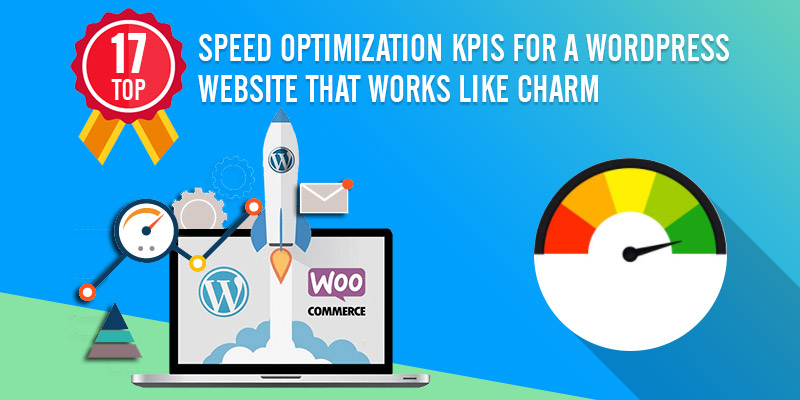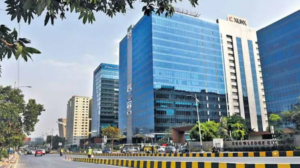Optimum speed is the lifeline for any WordPress website development. This is because a website ranking highly depends upon its page loading speed as it influences several factors such as user satisfaction, conversions, and ultimately profit-making. In this WordPress website development speed optimization guide, you will learn all that is relevant to speed up your WordPress. So without wasting any time let’s dive into the topic!
What makes the Website Speed so important?
Two solid factors determine the importance of Website speed, and they are:
1. A decline in the Visitors Turnout
Low page speed has a very high consequence when it comes to website traffic. For example, Amazon calculated a loss of 1.6 billion in annual sales due to the slowdown of their page while loading just for one second. Now even if the scale of other websites is way smaller than Amazon, but it is evident that when it comes to user retention and conversion, every second count. Here are some of the statistics concerning page load time and user behavior:
- The average human attention span between 2000 and 2015, has dropped from 12 to 8 seconds.
- 40% of users shut down the website if it takes more than 3 seconds to load.
- Nearly 48% of users expect a page to load within 2 seconds or less.
- 79% of potential buyers are less likely to return if they are not satisfied with a website’s performance.
- Almost 8% of conversions get reduced if the page takes one extra second to load.
2. Speed is a ranking factor for search engines
For all the available search engines like Google, Bing, Yahoo, Duck-Duck Go, speed is a critical factor for Ranking. It is because users want the best results and it is the job of a search engine to provide them the same. A website having low page loading speed will have more bounce rate.
The bounce rate is the rate of users who leave immediately after landing on a website. Such users don’t bother sticking around your website and wait until the page is loaded. Instead, they hit the back button and take an exit.
This is a bad impression in the eyes of Google and your site will be marked as a low-quality site. The issue is much more serious when it comes to the Mobile phone which tends to have slower internet connections as compared to a desktop computer. Google on record has stated that page loading speed will become a factor for ranking for their mobile index.
In today’s scenario, it is quite clear that mobile phones globally have taken over as the primary internet devices. Hence, website owners must ensure that their website is mobile friendly and takes less loading time.
17 ways for WordPress speed Optimization
Now as you know the importance of speed optimization, it is time that you must know the ways through which the same can be achieved. Here are 17 top speed optimization KPIs for a WordPress Website that works like charm:
1. Choose the best hosting plan
The first and the foremost step to increase the site performance is to choose a good hosting plan. Don’t get driven by your greed as there are also a lot of cheap offers out there as hosting is one of those areas where you get value for your money. To elaborate further, as the first step you must not choose a shared hosting plan as having bad neighbors on your server can slow down your website. A dedicated server in this case is a good option especially when you are not running a very huge website.
Among the available options, you should go for VPS hosting which provides you a good amount of speed, and it is cost-efficient at the same time. You can also go for managed WordPress hosting. This server is specially optimized for WordPress and the website owner needs mot to take care of any of the technical stuff while running the website. This option is quite pocket friendly as other options as developing a managed platform by yourself comes with a huge cost.
2. Time to time upgrading your web technology
New versions of web technologies like HTML, CSS, and PHP come from time to time and they contain improvements in terms of new features and improved speed. Hence it is mandatory to stay up to date. A good hosting plan will notify you if your PHP version is out of date (your website should at least have PHP 7.2 version). In your hosting backend, you can check for a PHP configuration or a similar menu item.
In the backend, you can choose the type of PHP version for your website. Remember that there are quite of few older WordPress versions that are not compatible with the latest PHP version. In that case, while you are updating your website, you must test on a staging site first and take a backup. This is a good way to revert the necessary changes if something goes wrong without breaking your live site.
3. Using the latest version of WordPress
Things that apply for your server software also hold for WordPress. There are always new features that come along with each version of the content management system (CMS). They help in the smooth running of your website without any lag. Keeping your website up to date is also very important when it comes to security.
The Latest WordPress version will ensure that all vulnerabilities are fixed along with themes and plugins. Keeping a spreadsheet is a good idea and you can use free Google Sheet for organizing and keeping an overview of your Woo Commerce and WordPress plugins.
4. Using a proper theme
Choosing an appropriate theme is a critical factor for website speed optimization. This is because there are many themes out there that have so many features that they slow down your website speed. All these features are nothing but a code that runs even if you are not using that particular feature. For that reason, it is better to look for a theme that exactly suits your need, nothing more, nothing less. It will be better to choose a lightweight theme and then later on you can add functionality via plugins.
This will also optimize your page loading time and you can keep things lean and lightweight. One important thing to be noted here is to choose themes that are mobile-friendly as the majority of the users access your website through cell phones and if the theme doesn’t go with the device then there is a high chance of declining in the website traffic. Also, themes should be ads friendly so that depending on your website’s popularity you can put up ads and generate some revenue later on.
5. Regular database maintenance
Just like WordPress updates its features from time to time, similarly, the database also needs to be updated. Technical issues like temporary disk space, post revisions, unused data from uninstalled plugins, etc. should be taken care of to optimize website functionality. Therefore, it is crucial to perform regular database maintenance to keep your database healthy.
For that reason, there are a couple of tools that you can use such as WP-Optimize and WP-Sweep. Secondly, if the wp_options table grows out of proportion then it can seriously affect the speed, hence it should be taken care of. You can use plugins like Advanced Database Cleaner and clean up the database to perform this task. For advanced cleanups, you can also consider hiring a qualified professional
6. Keeping a track
Someone has rightly said that the things that are get scheduled are the things that are getting done. So it is important to measure the progress to manage the task. This also applies to website speed as until and unless you are not aware of the issues, you can’t take necessary measures to fix them. In this article, we have already discussed the means through which you can measure your website.
There are certain tools available, for example, there is a tool called Pingdom which is best suited for automatic monitoring. There is another paid tool named GTmetrix starting from $14.95 that can monitor key metrics like visual render time and server response time which is what Google and the people who visit your website will highly appreciate.
7. Image Optimization
Images occupy the maximum part in a webpage more than CSS or text. If you want to maximize your WordPress speed you need to learn image compression which is making your images as small as possible without hampering the image quality. Earlier, people used to compress the images before uploading. In Photoshop for example you can use the feature called Save for Web, but it will still not compress the images to the maximum.
TinyPNG and ShortPixel are two such online tools used for image optimization. There you will get a bulk optimization tool feature so you need not optimize your images manually. There are also some free plugins available in the market like EWWW Image Optimization and WP Smush that you can try but spending some bucks to avail premium services will be a better idea as you will be getting a higher value.
8. Decrease Server Requests
When a browser asks some type of resource from your server like a style sheet, an image, or a script, it is said to be a server request that has happened. More server request means more loading time. Following these tips below will help you to reduce them to a minimum:
- Decrease the number of posts that appear on a page by splitting
- Only show excerpts post and not full posts on your archived pages
- You can distribute your comments into multiple pages.
- Reduce the elements including images on your page
- Uninstall or deactivate those plugins which are heavy or not in use
- Minimize the use of external resources like fonts if they are of less use
Tools like Pingdom and GTmetrix can provide you the information on server requests and their time duration. So you can easily eliminate them or you can ensure that they get completed as soon as possible.
9. Avoid hosting videos on your WordPress site
When we talk about website media, vides play a critical part. But they have to be dealt with utmost care as it can lead to slowing down your website speed. This means that hosting videos on WordPress is not a good idea as it will cost you your bandwidth which is very important especially when you are having a limited hosting account. It will further make your website bulkier.
The best idea is to host your website on a different server as there are plenty of video hosting platforms to do this job for you. Some of the popular platforms to host your videos are YouTube, DailyMotion, Vimeo, etc. you just need to copy the URL link from such platforms and paste it into your WordPress editor to include videos in your content.
10. Using a CDN – Content Delivery Network
When it comes to page loading time server location is very important. This is because depending upon the distance between the server hosting your site and the visitor, it is decided that how much time will take to transmit your site data. A content delivery network can fix this problem as it can host your static files on multiple servers in a single time distributed across the globe.
This will enable the visitor to receive your website from the closest location possible and thus minimizing the overall download time. There are multiple such services available in the market such as StackPath, Cloudflare, and Google Cloud CDN. In addition to that, there are also services such as Photon where you have an option that you can host parts of your website on a CDN.
11. Enabling Page Catching
As you know that an HTML version of your page is created dynamically by WordPress if someone requests. As it slows down the speed so it is better to have a complete HTML page all the time which will eliminate several extra steps. Page catching can be good to decrease the loading time of your WordPress website. There are several plugins that you can use like WP Super Cache, W3 Total Cache, and WP Fastest Cache.
There also several paid plugins and tools to do your job. You can also request your host if they could provide server-side catching first. Page hosting is often used to cover performance issues such as slow plugins, slow themes, bloated database, and even low-quality hosting. The best option is to make sure that all these elements are in place and you don’t have to rely on page catching later on.
12. Security
Your site could be vulnerable and there might be a scope of some potential threat to exploit your site and suck up your site resources. Therefore, you have to check all the elements including themes and plugins to ensure that your website’s security. The first step is to check your log files and server resources to ensure that there is no such excessive load. Mostly, excessive server load is caused due to bots that attack your site so it is better to get an alert in the first place if the server load is too high.
The website can be protected from such attacks with tools like Sucuri and Cloudflare. Using just a plugin for security is not an ideal solution as it will consume a large number of resources using PHP. This process is pretty expensive, hence using Cloudflare and Sucuri would consume fewer resources as compared to WordFence. If you are looking for a lighter version of WordFence then you can go for “All in one Security and Firewall”.
13. Enable HTTPS and HTTP/2
HTTP 1.1 was majorly used by the web for a very long time and needed an upgrade. Then HTTP/2 came into the picture with more performance enhancements like server push, multiplexing, header compression, and many more. For running HTTP/2 on your site, you must be running https by installing an SSL certificate. Although, it is not official no modern browser will run HTTP/2 unless your site is running https. Therefore, don’t just use plugins as you might be encountering some irregular behavior, instead, get your site upgraded to https if it is still on HTTP.
14. Concatenate your files
From the above points, it is quite clear that having fewer server requests is good for your WordPress website speed. You can reduce the files for downloading by combining them by concatenation. Concatenation is joining two or more than two items together and forming a single unit out of it.
There is always an advantage to concatenate. The main advantage of concatenation is that downloading one large file is usually faster than downloading several smaller files. Hence, when you can’t download them simultaneously, try concatenation.
15. File Minification
A code file usually looks neat and easy to read through formatting and comments. Unfortunately, browsers and computers are insensitive about this as for them the code will get executed flawlessly even of all it goes. Further, formatting makes the file bigger, and the larger the file is the more is the time taken to download. So the best solution is to minify your files and you can tackle this problem. Tools like W3 Total Cache and Autoptimize can do this job for you. Some developers also use other tools like Grunt and Gulp.
16. Enabling Gzip Compression
Just like compressing your images, you can do the same with your WordPress website for speed optimization. A WordPress website is nothing but a bunch of files having repetitive data and code. Compression works best in this kind of scenario where things are repetitive.
Therefore you can compress websites and make them smaller and faster to download. Now a day’s almost all browsers can interpret compressed files so you can easily optimize your website speed. Many hosts in the market are implementing the Gzip server-side without including any additional configuration.
So you need to ensure that your hosting plan is proving you what you need. If Gzip is not activated then you can activate it either by using catching plugin or adding the code mentioned below to the .htaccess file in your root directory.
17. Disable hotlinking and leeching of your content
Hotlinking is using images in your website content that is not hosted on your own WordPress site. It is a form of bandwidth “theft”. Instead of uploading an image on your own site, you provide a link to a different site from where the image is loaded. This happens to those websites which are popular.
It eats up your bandwidth as your server has to work in such a way that it has to transport the image from a different website and your web traffic remains as it is. If you want to put up a full stop on hotlinking you need to add the following code to your .htaccess file. Scapeshield can be used by Cloudflare users.
Conclusion
In the end, we can conclude that the speed of a WordPress website can be optimized by using the following techniques mentioned in this article. Although these are not the only techniques, as there are a lot of other ways by which you can optimize the speed of your page. WordPress is a very popular CMS and is written in PHP and paired with MariaDB or MySQL database. Among all the points mentioned above the two most critical points are choosing a good hosting plan and theme for your website. All rest of the things come after that as the two forms the core foundation of any site. In case you have the less technical knowledge, you can also take help from various freelance developers available on multiple freelance platforms by paying a fee. Hope this article will be of some value to you.




